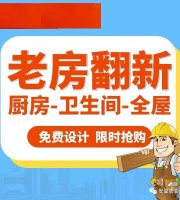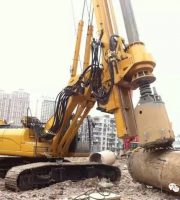Positioning at a fixed distance, setting out the position of the cantilever beam and marking it properly. The cantilever beam must ensure sufficient anchoring strength and section buckling resistance, and the cantilever length should be determined according to the design. When the ordinary main beam is cantilever, the upright pole is directly supported on the cantilever beam, and the longitudinal spacing of the horizontal cantilever beam is the same as the longitudinal spacing of the upper scaffold upright pole; The upper scaffolding pole and cantilever beam support structure should have reliable positioning and connection measures to ensure the stability of the upper scaffolding body. Usually, welding 150-200mm with outer diameter is used on cantilever beams or longitudinal connecting beams Φ 40mm steel pipe or outer diameter Φ A 25mm steel bar is placed on the outside of the upright pole, and a sweeping rod is also installed at the bottom of the upright pole..
The horizontal cantilever beam must ensure sufficient anchoring strength and section buckling resistance. The longitudinal spacing of the horizontal cantilever beam is the same as the longitudinal spacing of the upper scaffolding pole, and the pole is directly supported on the cantilever beam. The upper scaffolding pole and cantilever beam support structure should have reliable positioning and connection measures to ensure the stability of the upper scaffolding body. Usually, welding 150-200mm with outer diameter is used on cantilever beams or longitudinal steel beams φ A 25mm steel bar is installed on the outside of the upright pole, and a sweeping rod is also installed at the bottom of the upright pole. As shown in the figure below.
Special site treatment measures: Here is a free download of construction technology materials.
The overhanging I-beams at the external corners of the structure intersect, and the length of the extending end cannot be guaranteed. If the length of the overhanging end is greater than 1.5, the I-beams on both sides are welded to the external corners at the intersection, with -200 × 200 × 10mm steel plates added on both sides. All contact points must be fully welded, and the height of the welding foot must not be less than 8mm, and there should be no air holes, slag inclusions, or missed welding. Prevention and Control of Safety Hazards in Scaffolding Engineering (1) Firstly, there are corrosion, deformation, punching, bending and other phenomena in components such as steel pipes, shackles, and scaffold boards, which have not been maintained and maintained upon entry..
Technical Specification for Safety of Steel Pipe Scaffolding with Couplers in Construction JGJ130-2011.
8.1.1 Article 4: The surface of the steel pipe should be straight and smooth, without cracks, scars, layering, misalignment, hard bending, burrs, indentations, and deep scratches; Article 5: Steel pipes should be coated with anti rust paint..
Before use, fasteners should be selected one by one, and those with cracks, deformation, or bolt slippage are strictly prohibited from use..
1. The factory quality of components should meet the requirements of relevant product standards, and the appearance quality of rods and components should comply with the requirements of Chapter 4 of the Unified Standard for Safety Technology of Construction Scaffolds GB51210-2016, Materials and Components. Steel pipes with cracks, creases, obvious surface depressions, and severe corrosion are not allowed to be used; The weld seam of the welded part should be full, and the welding slag should be removed completely without defects such as incomplete penetration, slag inclusion, undercutting, cracks, etc..
2. Steel pipes, fasteners, scaffolding and other components should be inspected for relevant product certificates upon entry, and acceptance should be organized. Sampling and retesting should also be conducted..
2、 The foundation of the scaffold is uneven and solid, and there is no base plate or drainage facilities at the bottom of the upright pole, so the foundation acceptance has not been carried out..
The Safety Technical Specification for Coupled Steel Pipe Scaffolding in Construction JGJ130-20117.1.4 should clearly indicate the debris on the construction site, level the construction site, and ensure smooth drainage. 8.2.3 Article 2: The foundation should have no accumulated water, the base should not be loose, and the upright poles should not be suspended..
2. The elevation of the bottom surface of the upright pole pad or base should be 50mm to 100mm higher than the natural floor..




